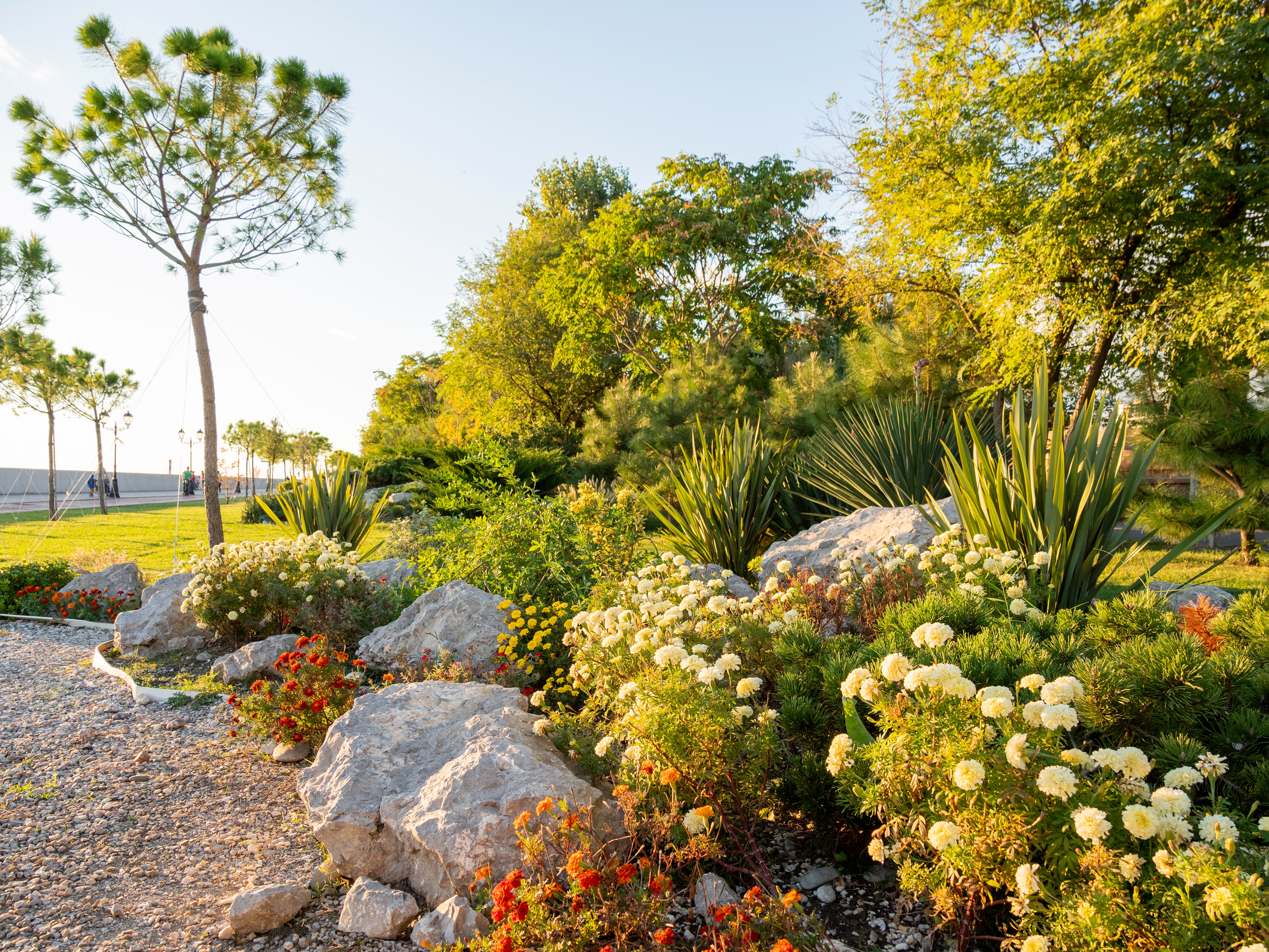Land is becoming ever more precious in urban land development as we find ways to get creative with our outdoor spaces. It has undergone several transformations over time, each time being redefined and perfected to accommodate human interest. As our communities grow, land becomes less and less available forcing us to discover new ways to control the input and output of our landscapes.
Sustainable Landscapes
 As we face new challenges and explore ideas to address the problems within our property, the concept of an alternative landscape paradigm continues to evolve and gain attention. Whatever environmental and ecological issues are being faced, sustainable landscaping aims to provide a solution by offsetting the negative environmental impacts within our landscape design. Providing several benefits and advantages, the goal of sustainable landscaping is to conserve, prevent, reduce and balance.
As we face new challenges and explore ideas to address the problems within our property, the concept of an alternative landscape paradigm continues to evolve and gain attention. Whatever environmental and ecological issues are being faced, sustainable landscaping aims to provide a solution by offsetting the negative environmental impacts within our landscape design. Providing several benefits and advantages, the goal of sustainable landscaping is to conserve, prevent, reduce and balance.
Whether it’s arranged as a restored native ecosystem or in a landscape bed with a design that includes native plants, sustainable landscapes promote a diverse and rich community of plants. It will maintain natural growth forms attempting to emulate nature by design. With their deep rooted systems, the use of native plants in a sustainable landscape increases energy efficiency, reduces pollution, cleans the air and water, restores habitats from the depleting native wildlife and insects, and create significant economic, social and environmental benefits.
Sustainable landscapes mimic wild ecosystems in that they can thrive in a landscape without the extra inputs of lawn care treatments, such as irrigation and fertilizers. By incorporating water-absorbent features, native plants that integrates food production into the landscape, and locally sourced materials for plants and hardscapes (stone, paving materials) you can allow your landscape to go unmanaged for longer periods of time.
Traditional Landscapes
Traditional landscapes are designed to enhance the urban experience. Their modern aesthetics are eye catching and dynamic. They are loaded with irrigation systems that permeate the beds, fertilizers which infiltrate plants, and landscaping that is trimmed to perfection giving definition to individual plants competing for your attention.
However, with their clean cut, organized nature they are much needier and require more maintenance than that of a sustainable landscape. Modern landscape models contain imitations of Mother Nature and chemically enhanced products to maximize the potential of achieving a royal aesthetic. They foster an extreme dependence on human labor, requiring chemical input, trimming, and irrigation that weakens the ecology of a landscape. They also attempt to impose a “one size fits all” approach in the landscape, abandoning diversity and indigenous ecology and creating an unpalatable habitat for domestic species.
Nature and chemically enhanced products to maximize the potential of achieving a royal aesthetic. They foster an extreme dependence on human labor, requiring chemical input, trimming, and irrigation that weakens the ecology of a landscape. They also attempt to impose a “one size fits all” approach in the landscape, abandoning diversity and indigenous ecology and creating an unpalatable habitat for domestic species.
Replacing traditional, default landscapes with a diversity of native trees, shrubs, grasses and wildflowers to support the hundreds of native species needed to sustain wildlife, such as frogs and lizards (which help control pesky flies and mosquitoes), allows us to reverse the trend of wasteful landscape practices. We already live far beyond the earth’s capacity to support us as humans so it is our job is to help customers realize the sustainable potential of their landscapes! Contact a Bluegrass team member to help you embrace sustainability within your property. Give us a call at 314-770-2828 or use our simple contact us form to discuss your sustainability needs!
References
Tare, M. (2013, August 1). Defining and Designing Sustainable Landscapes. Retrieved from Meeting of the Minds: http://cityminded.org/designing-for-future-sustainable-landscapes-8529
The Value of Sustainable Landscaping. (n.d.). Retrieved from La Loma Development Company: http://www.lalomadevelopment.com/about-us/value-sustainable-landscaping




